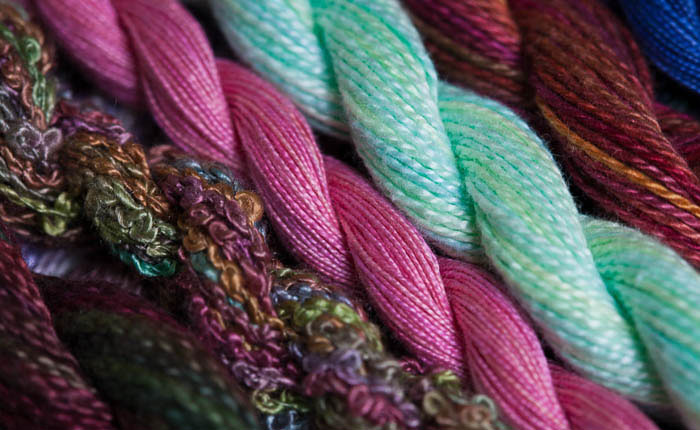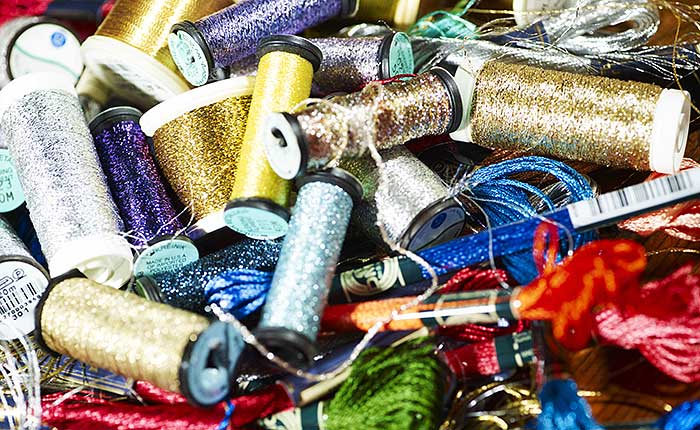Thread Basics for Cross Stitch
There are hundreds of different threads available to the stitcher, too many to list them all. The information below gives basic guidance for the new cross stitcher.
Choosing and Managing Threads
The most commonly used thread for counted embroidery is stranded cotton (often referred to as embroidery silks) but you will see flower threads, linen threads, rayons, perlé cottons, assorted metallic and spaced-dyed specialist threads used in charts and patterns.

I use Madeira stranded cotton (floss) for all my cross stitch kits but there are other makes available. The picture above illustrates some of Oliver Twists wonderful fibres- they make me itch to stitch!
Using Stranded Cotton (Floss)
When selecting threads, always have the fabric you are intending to use close at hand, because the colour of your background fabric will affect your choice of thread colours. When in a shop, check the colour of the thread in daylight as electric light can ‘kill’ some shades. It is possible to buy daylight bulbs to use in normal spotlights at home – a great help when working in the evening.
Cross stitch is generally worked using two strands of stranded cotton when working on 14-count and 16-count Aida. It is perfectly acceptable to mix the number of threads used within the same project. You might want to alter the texture of the finished piece by working in one, two and even three strands.
When using two strands or more for your cross stitch, you will need to separate the strands and then realign them before threading your needle and beginning to stitch.
If you are working on aida and are not sure how many strands to use, stitch a few complete cross stitches and look at the stitching in daylight. Some colours may need the number of strands adjusting to suit the project.
If you are working on evenweave and do not know how many strands to use, carefully pull a thread from the edge of the fabric and compare the thread with the strands of cotton. Generally, the strands on the needle should be a similar weight, unless you want a more striking effect.
Perlé cotton
Perlé or perl is a non-divisible shiny cotton thread in several different thicknesses and colour ranges. It is often used for Hardanger embroidery.
Silk thread
Silk threads are available in a huge range of colours and types, from the large manufacturers and small specialist suppliers and dyers. More expensive than cotton, they are used when the sheen and/or fineness of silk are required.
There are also viscose threads with a very high sheen.
Metallic and blending threads

You can see that metallic threads come in all shapes and sizes not just in skeins
Available in a huge range of thicknesses, colours and types from companies such as Kreinik, Coats and DMC. They are usually used in combination with other threads to give a sparkle or shine.In our Members' Studio we have tips and hints fot use these more challenging threads! Go to Join Us
Wool yarns
Twisted pure wool is used for canvaswork embroidery (often called tapestry). There are several makes, including Anchor Tapisserie wool (Coats), DMC Tapestry Wool and Appletons Tapestry Wool.